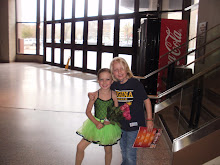
The Long and Short of It by Cheryl Nathan and Lisa McCourt; Illustrated by Cheryl Nathan (BridgeWater Books, 1998)
Yet another book that introduces the math concept of measurement. The Long and Short of It offers comparisons between animals that have things that are long to those of animals that have something that is short (a toucan with a long beak versus a chicken with a short beak). The authors use of describing words allows the reader to visualize just how long and short the item is (ex. "and who can grow its beak longer than a banana? A toucan can! A chicken has a beak too, but guess what? Its beak is as short as a grape.")
This book was recommended through Harcourt Math to introduce the concept of measurement into the younger grades. The use of animals makes the story more enjoyable for its intended audience. Putting the measurement into terms even the youngest student could comprehend is also a good use of this text. My only concern is that some of the animals used are not exactly animals that everyone may be familiar with.
Intended audience: Kindergarten through 1st.





